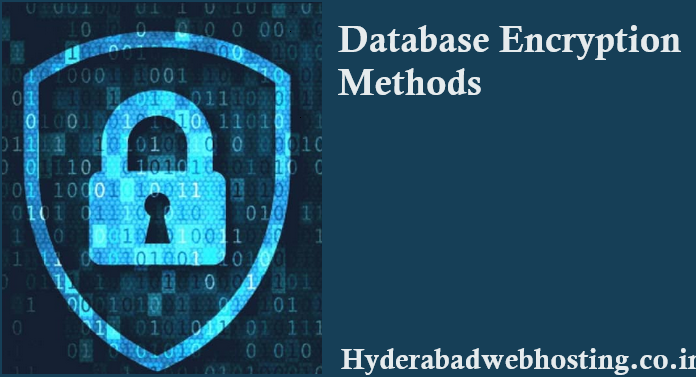Types of Database Encryption Methods
How does database encryption work?
With database encryption, an encryption algorithm transforms data within a database from a readable state into a ciphertext of unreadable characters. With a key generated by the algorithm, a user can decrypt the data and retrieve the usable information as needed. Unlike security methods like antivirus software or password protection, this form of defense is positioned at the level of the data itself. This is crucial because if a system is breached, the data is still only readable for users who have the right encryption keys.
There are a few different options for implementing a database encryption algorithm, including varying lengths of keys. You will find that different databases—Oracle, SQL, Access, etc.—offer different data encryption methods, options that may inform which method you recommend to customers.
Longer keys tend to be more secure since they are harder to discover through computation. For instance, 128-bit encryption relies on a key that is 128 bits in size, and by virtue of this length, is virtually impossible to “crack” with a computation system.
In short, the system would have to test 2128 combinations to crack the code, which would take thousands of years. As a rule of thumb, a shorter key length means poorer security, and standard key lengths may have to continue to grow as general computational power increases.
That said, a longer key length can reduce the number of sessions per second, which can have a negative impact on throughput. Many developers hold off on database encryption precisely because they fear such performance degradations and potential system slowdowns. Additionally, encrypting a database will require more storage space than the original volume of data.
While it’s true that database encryption adds some complexity (making tasks like backup and recovery trickier), it’s possible to ensure good performance by implementing a range of best practices. For instance, strategically implementing file-level encryption will have a much lower impact on performance than application-level or other more granular encryption methods.

Common database encryption methods
It’s possible to encrypt data at a number of levels, from the application to the database engine.It’s important to be clear on the purposes and requirements of these different encryption methods:
- API Method: This is application-level encryption that is appropriate across any database product (Oracle, MSSQL, etc). Queries within the encrypted columns are modified within the application, requiring hands-on work. If a business has an abundance of data, this can be a time-consuming approach. Additionally, encryption that functions at the application level can lead to increased performance issues.
- Plug-In Method: In this case, you’ll attach an encryption module, or “package,” onto the database management system. This method works independently of the application, requires less code management and modification, and is more flexible—you can apply this to both commercial and open-source databases. With this option, you will typically use column-level encryption.
- TDE Method: Transparent data encryption (TDE) executes encryption and decryption within the database engine itself. This method doesn’t require code modification of the database or application and is easier for admins to manage. Since it’s a particularly popular method of database encryption, TDE is explored in further detail below.
Database encryption methods are essential for protecting sensitive data within a database. Here are some common types of database encryption methods:
1. Transparent Data Encryption (TDE)
- Description: TDE encrypts the entire database at the storage level, making it transparent to the application layer.
- Use Case: Often used in scenarios where the goal is to protect data at rest without requiring changes to the application.
2. Column-Level Encryption
- Description: Encrypts specific columns within a database table that contain sensitive information (e.g., Social Security Numbers, credit card numbers).
- Use Case: Ideal when only certain sensitive data within a database needs to be encrypted, allowing for more fine-grained control.
3. File-Level Encryption
- Description: Encrypts the entire database file or specific files that store database data.
- Use Case: Useful for securing backup files or when the entire database file needs to be protected.
4. Application-Level Encryption
- Description: Data is encrypted by the application before being stored in the database.
- Use Case: Provides the highest level of security, as data is encrypted end-to-end and is never stored in plaintext in the database.
5. Transport-Level Encryption (TLS/SSL)
- Description: Encrypts the data while it is being transmitted between the database server and the client.
- Use Case: Essential for securing data in transit, particularly in distributed systems or cloud environments.
6. Full-Disk Encryption
- Description: Encrypts the entire disk where the database resides, including all files and directories.
- Use Case: Useful for protecting data at rest in scenarios where the entire disk may be at risk of physical theft.
7. Data Masking
- Description: Although not strictly encryption, data masking involves obscuring sensitive data by replacing it with fictitious but realistic data.
- Use Case: Often used in development and testing environments where real data is not needed.
8. Key Management Systems (KMS) Integration
- Description: Involves using external key management systems to handle the encryption keys.
- Use Case: Essential for maintaining control over encryption keys, especially in large-scale or highly regulated environments.
9. Homomorphic Encryption
- Description: Allows computation on encrypted data without needing to decrypt it first.
- Use Case: Useful in scenarios where data privacy needs to be maintained while still performing computations, though it is computationally expensive.
10. Cell-Level Encryption
- Description: Encrypts individual cells in a database table, offering more granular control than column-level encryption.
- Use Case: Used when there is a need for extremely fine-grained encryption, especially in tables with mixed sensitivity levels.
Each encryption method has its own strengths and is suitable for different scenarios based on security requirements, performance considerations, and regulatory compliance needs.
Along with if you need to know about SSH Essentials: Working with SSH Servers, Clients, and Keys click.




